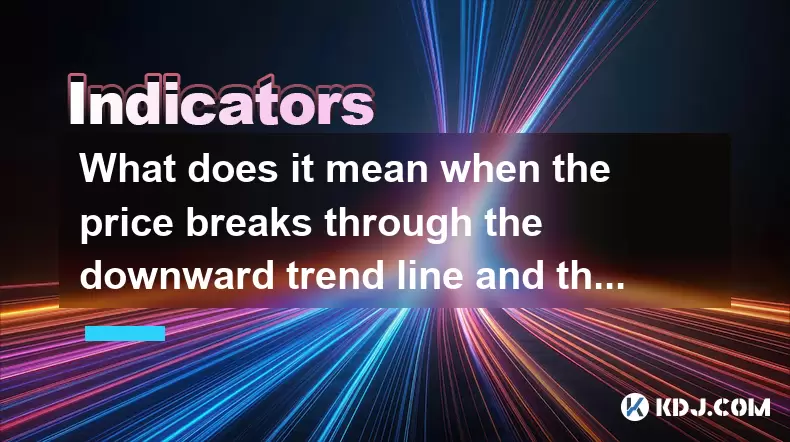-
 Bitcoin
Bitcoin $118600
0.36% -
 Ethereum
Ethereum $3855
1.06% -
 XRP
XRP $3.195
-0.09% -
 Tether USDt
Tether USDt $1.000
-0.04% -
 BNB
BNB $844.5
6.23% -
 Solana
Solana $191.3
2.83% -
 USDC
USDC $0.9997
-0.01% -
 Dogecoin
Dogecoin $0.2376
0.10% -
 TRON
TRON $0.3242
0.83% -
 Cardano
Cardano $0.8222
0.13% -
 Hyperliquid
Hyperliquid $45.26
6.53% -
 Sui
Sui $4.200
-2.56% -
 Stellar
Stellar $0.4336
-1.24% -
 Chainlink
Chainlink $18.86
0.28% -
 Hedera
Hedera $0.2796
-1.75% -
 Bitcoin Cash
Bitcoin Cash $583.3
-1.84% -
 Avalanche
Avalanche $27.06
8.09% -
 Litecoin
Litecoin $112.3
-1.16% -
 Toncoin
Toncoin $3.353
0.58% -
 UNUS SED LEO
UNUS SED LEO $8.968
-0.11% -
 Shiba Inu
Shiba Inu $0.00001395
-0.54% -
 Ethena USDe
Ethena USDe $1.001
-0.03% -
 Uniswap
Uniswap $10.76
0.69% -
 Polkadot
Polkadot $4.175
0.26% -
 Monero
Monero $326.7
1.07% -
 Bitget Token
Bitget Token $4.665
1.61% -
 Dai
Dai $0.9998
-0.02% -
 Pepe
Pepe $0.00001271
0.32% -
 Cronos
Cronos $0.1416
2.01% -
 Aave
Aave $299.3
1.15%
What does it mean when the price breaks through the downward trend line and the EMA turns?
A breakout above a downward trend line with rising volume and a turning EMA signals potential bullish reversal in crypto, especially if confirmed by a retest and support hold.
Jul 27, 2025 at 07:56 am

Understanding the Downward Trend Line Break in Cryptocurrency Trading
When analyzing cryptocurrency price charts, traders often rely on trend lines to identify the direction of momentum. A downward trend line is drawn by connecting the lower highs of an asset’s price movement over time. This line acts as a resistance level, indicating persistent selling pressure. When the price breaks through the downward trend line, it suggests that the bearish momentum may be weakening. This breakout is considered significant when it occurs with a strong candlestick closing above the trend line, especially if accompanied by increased trading volume. The breach signals that buyers are starting to overpower sellers, potentially marking the end of a downtrend.
Traders watch for confirmation of the breakout by observing whether the price sustains above the former trend line. If the price retests the broken trend line and holds as support, it strengthens the validity of the reversal. The psychological shift from resistance to support is a key concept in technical analysis, often referred to as role reversal. This phenomenon occurs because previous resistance levels can become new support zones once broken, reflecting a change in market sentiment.
The Role of EMA in Confirming Trend Reversals
The Exponential Moving Average (EMA) is a widely used technical indicator that gives more weight to recent price data, making it more responsive to new information than the Simple Moving Average (SMA). Common EMAs used in crypto trading include the 9-day, 21-day, and 50-day EMAs. When the EMA “turns,” it refers to a change in the slope of the moving average line — typically shifting from downward to upward. This turning point suggests that the average price is beginning to rise, reflecting a potential shift in market dynamics.
A bullish EMA turn often coincides with increasing buying pressure. For instance, if the 21-day EMA was declining but starts to flatten and then curve upward, it indicates that short-term momentum is shifting in favor of buyers. When this occurs simultaneously with a breakout above a downward trend line, the confluence of signals increases the likelihood of a sustained upward move. Traders interpret this combination as a strong buy signal, especially if both price and EMA movements are supported by rising volume.
How to Identify a Valid Breakout and EMA Turn
To avoid false signals, traders must apply strict criteria when evaluating a breakout and EMA turn:
- Confirm the trend line break with a closing candle above the line, not just a wick or intraday spike.
- Check volume levels during the breakout; higher-than-average volume adds credibility.
- Observe the EMA slope over multiple periods to ensure it is not just a temporary fluctuation.
- Wait for a retest of the broken trend line to see if it now acts as support.
- Align the EMA timeframe with your trading strategy — shorter EMAs for scalping, longer ones for swing trading.
Using multiple timeframes enhances accuracy. For example, a breakout on the 4-hour chart confirmed by a turning 50-period EMA carries more weight if the daily chart also shows similar signs of reversal. Tools like TradingView allow traders to draw trend lines and apply EMAs across various assets such as Bitcoin (BTC) or Ethereum (ETH) with precision.
Practical Example Using Bitcoin’s Price Chart
Consider a scenario where Bitcoin has been in a downtrend for several weeks, forming lower highs connected by a clear downward trend line. Suppose the price reaches this trend line for the fifth time and instead of bouncing down, it closes decisively above it on high volume. At the same time, the 9-day EMA, which had been sloping downward, begins to flatten and then turns upward over the next two days.
This setup suggests a potential reversal. A trader might enter a long position after the close above the trend line, placing a stop-loss just below the recent swing low. The target could be set at the previous resistance level or determined using a measured move based on the height of the prior downtrend. Monitoring whether the price holds above the former trend line during subsequent candles is critical for managing the trade.
Common Mistakes When Interpreting These Signals
Many traders misinterpret early signs as confirmed reversals. A fake breakout occurs when the price briefly moves above the trend line but quickly reverses back into the downtrend. Similarly, an EMA may appear to turn but then resume its downward path, leading to losses if positions are opened prematurely.
Another mistake is ignoring the broader market context. Even if a breakout and EMA turn occur on a single asset, overall market sentiment — influenced by macroeconomic factors or major coin movements — can override technical signals. For example, a BTC breakout might fail if the entire crypto market is under pressure due to regulatory news.
Over-reliance on EMAs without considering other indicators like RSI, MACD, or order book depth can also reduce accuracy. Combining EMA analysis with volume profile or support/resistance levels improves decision-making.
Setting Up Alerts for Breakouts and EMA Turns
To stay ahead of potential reversals, traders can set up automated alerts:
- Use TradingView’s alert system to notify when price crosses a drawn trend line.
- Create a custom alert for when the EMA changes direction — for instance, when the current EMA value exceeds the previous period’s value after a period of decline.
- Combine conditions: trigger an alert only when both the price breaks the trend line and the 21-day EMA turns upward.
- Configure alerts to send notifications via email, SMS, or app push.
These alerts help traders react quickly without constantly monitoring charts, which is essential in the 24/7 crypto market.
Frequently Asked Questions
What timeframes are best for identifying a trend line breakout and EMA turn?
The 4-hour and daily charts are most reliable for spotting meaningful reversals. Shorter timeframes like 15-minute charts produce more noise and false signals, while weekly charts may delay entry too long. Combining 4-hour confirmation with daily trend alignment offers a balanced approach.
Does the EMA turn need to happen on the same candle as the breakout?
No. The EMA turn can occur before, during, or shortly after the breakout. What matters is that both events happen in close proximity and reinforce each other. A delayed EMA turn may still confirm the reversal if price remains above the trend line.
Can a sideways market produce false EMA turns and trend line breaks?
Yes. In a ranging market, trend lines may be less reliable, and EMAs can whipsaw due to price oscillations. Traders should avoid drawing trend lines in choppy conditions unless clear swing points exist. Use ADX (Average Directional Index) to confirm whether a trend is strong enough for these signals to be valid.
How do I distinguish between a trend line breakout and a pullback within a downtrend?
A true breakout sustains above the trend line and is supported by volume and EMA alignment. A pullback typically fails to close above the line and lacks volume. Watch for follow-through — two or more strong bullish candles after the breakout increase its validity.
Disclaimer:info@kdj.com
The information provided is not trading advice. kdj.com does not assume any responsibility for any investments made based on the information provided in this article. Cryptocurrencies are highly volatile and it is highly recommended that you invest with caution after thorough research!
If you believe that the content used on this website infringes your copyright, please contact us immediately (info@kdj.com) and we will delete it promptly.
- RUVI Token's Ripple Rally Potential: Audited AI Crypto Heats Up!
- 2025-07-29 04:50:12
- ADA Price, Cardano, SUI & Remittix: Decoding the Latest Crypto Moves
- 2025-07-29 04:50:12
- Solana, ARK Invest, and Staking: A New Era of Institutional Crypto?
- 2025-07-29 05:30:12
- XRP Holders, NIGHT Tokens, and the Airdrop Bonanza: What's the Deal?
- 2025-07-29 05:50:13
- BONK's Bullish Pennant and Volume Surge: Is $0.00004800 Next?
- 2025-07-29 05:10:12
- Mona Lisa Goes Digital: NFTs, Million-Dollar Dreams, and the Future of Art
- 2025-07-29 04:30:12
Related knowledge

What does it mean when the EMA combination crosses upward for the first time after sideways trading?
Jul 28,2025 at 03:43pm
Understanding the EMA and Its Role in Technical AnalysisThe Exponential Moving Average (EMA) is a widely used technical indicator in cryptocurrency tr...

What signal does the ROC send when it rises rapidly from a low level and breaks through the zero axis?
Jul 27,2025 at 10:15am
Understanding the Rate of Change (ROC) IndicatorThe Rate of Change (ROC) is a momentum-based oscillator used in technical analysis to measure the perc...

What does it mean when the price breaks through the double bottom neckline and the moving averages are arranged in a bullish pattern?
Jul 28,2025 at 10:57am
Understanding the Double Bottom PatternThe double bottom is a widely recognized reversal chart pattern in technical analysis, particularly within the ...

What signal does the DMA fast line cross the slow line above the zero axis?
Jul 28,2025 at 05:42am
Understanding the DMA Indicator and Its ComponentsThe DMA (Difference of Moving Averages) indicator is a technical analysis tool used in cryptocurrenc...

What does it mean that the rebound is blocked after the moving average is arranged in a short position for the first time?
Jul 26,2025 at 10:51am
Understanding the Short-Term Moving Average ConfigurationWhen traders refer to a 'short position arrangement' in moving averages, they are describing ...

What does it mean that the ZIGZAG low point is raised and the high point breaks through the previous peak?
Jul 28,2025 at 03:28am
Understanding the ZIGZAG Indicator in Cryptocurrency TradingThe ZIGZAG indicator is a technical analysis tool widely used in cryptocurrency trading to...

What does it mean when the EMA combination crosses upward for the first time after sideways trading?
Jul 28,2025 at 03:43pm
Understanding the EMA and Its Role in Technical AnalysisThe Exponential Moving Average (EMA) is a widely used technical indicator in cryptocurrency tr...

What signal does the ROC send when it rises rapidly from a low level and breaks through the zero axis?
Jul 27,2025 at 10:15am
Understanding the Rate of Change (ROC) IndicatorThe Rate of Change (ROC) is a momentum-based oscillator used in technical analysis to measure the perc...

What does it mean when the price breaks through the double bottom neckline and the moving averages are arranged in a bullish pattern?
Jul 28,2025 at 10:57am
Understanding the Double Bottom PatternThe double bottom is a widely recognized reversal chart pattern in technical analysis, particularly within the ...

What signal does the DMA fast line cross the slow line above the zero axis?
Jul 28,2025 at 05:42am
Understanding the DMA Indicator and Its ComponentsThe DMA (Difference of Moving Averages) indicator is a technical analysis tool used in cryptocurrenc...

What does it mean that the rebound is blocked after the moving average is arranged in a short position for the first time?
Jul 26,2025 at 10:51am
Understanding the Short-Term Moving Average ConfigurationWhen traders refer to a 'short position arrangement' in moving averages, they are describing ...

What does it mean that the ZIGZAG low point is raised and the high point breaks through the previous peak?
Jul 28,2025 at 03:28am
Understanding the ZIGZAG Indicator in Cryptocurrency TradingThe ZIGZAG indicator is a technical analysis tool widely used in cryptocurrency trading to...
See all articles

























































































